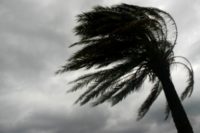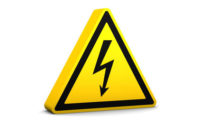Equally as important to a construction superintendent is the question: “Will the clothing selected for the workers continue to help keep them protected from the cold for the intended life of the garments?”
The common way to address these questions has been, for the most part, common sense coupled with a trial-and-error approach. Now, the American National Standard for Classification of Insulating Apparel Used in Cold Work Environments (ANSI/ISEA 201-2012) can help employers and site managers offer guidance to help keep employees protected at work from cold weather hazards. The new ANSI/ISEA 201-2012 voluntary standard provides parameters so cold weather clothing can be measured, certified and specified, so employers and employees can choose the right clothing for the work environment.
The standard includes five main elements:
1. Measuring Insulation Performance — A consistent and specific test method to rate insulated garments for intrinsic insulation values, otherwise known as clo units. Think of clo units as analogous to the R value in your home insulation. The amount of thermal resistance is important to determine the thermal performance category.
- This is important because previously there was no single consistent method agreed upon by the industry to determine a garment’s level of warmth, which is a key characteristic for keeping the wearer comfortable.
2. Classifying Insulation Performance — Six insulation performance categories in tandem with a defined temperature rating system.
- The performance differences in garments between categories can be felt by the wearer. The temperature ratings are calculated consistently, and are based on the anticipated intensity of work effort.
3. Garment Durability — Four durability classes based on retention of insulation properties as a function of the type and number of manufacturer-specified cleaning cycles.
- This standard addresses how long a garment retains insulation properties under expected laundering regimens. Some garments are not as warm or comfortable as others after multiple cleanings.
4. Certification Requirements
5. Care Labeling and Specific Marking
- Wearers know what they are buying based on the information printed on labels and markings to ensure they purchase the right apparel for the appropriate cold environment. Provides specifiers a basis to determine and compare the performance value in the garment.
An employer can make use of this standard to aid in the specification or selection process for outfitting workers by using guidance in Appendix A. The first step is to determine the user’s application characteristics. This includes knowing the type of activities and level of effort, e.g., is it “light work” or a “medium-to-high” physical activity. It also requires identifying the environmental conditions (e.g., temperature exposure, etc.), and how many hours the effort will be endured in these conditions before a break is expected.
Next, estimate the required heat retention — the approximate ensemble intrinsic insulation value needed. The above parameters and the methods described in the standard and other supporting standards can be used to determine which insulation performance category will be appropriate.
Performance Category 1 clothing could be considered as the outermost layer in mild environments, or as the inner layer of ensembles for more extreme conditions (e.g., thin fleece garment, sweatshirt, etc.). Typical clothing in Performance Category 2, 3 or 4 would include medium to heavy weight outerwear with insulation lining (e.g., insulated jackets, coveralls, etc.). Performance Category 5 or 6 clothing would include heavily insulated outerwear (e.g., heavy insulated parkas, freezer wear coveralls, etc.).
The third step is to estimate the wash durability class of the garment, that is, how long a worker’s garment should be expected to stay in service. This will be in terms of the type and number of laundering cycles that the garment needs to meet. For example, are these 10 home launderings, 50 dry-cleanings, or 25 industrial launderings?
The fourth step is the actual selection, specification and procurement of the garment. An ANSI 201 rated garment will have all of these pertinent attributes included in the label.
Finally, the selected garments are evaluated by the users for their intended use. Do the workers self-indicate that the selected garments perform as expected? Are there any modifications that will need to be made?
Employers have the responsibility to protect their workers by making sure that they are outfitted properly for cold environments, but for years they have been working by trial and error with no selection procedure in place, and no objective basis to compare garments to ensure they exhibit the proper warmth characteristics. Today, the ANSI/ISEA-201 standard serves as a valuable tool for the industry. Employers who are educated about their workers’ environmental exposure to cold may better assess how workers’ needs translate to activity levels and clo values. Employers will then be able to better specify the proper garments to match working conditions, and to promote worker performance and safety on the job.
SIDEBAR
|
PPE for extreme emergencies |
|
Workers involved in Hurricane Sandy cleanup and recovery activities face a myriad of hazards as well as very unpredictable weather and sudden changes in weather patterns. These precautions apply to rescue and recovery operations in general. They certainly include personal protective equipment (PPE). • Respirators protect against chemical hazards and dusts. • FR clothing might be needed for electrical hazards. • Gloves potentially might have to be water-resistant, chemical-resistant and protect against electrical hazards. • Footwear is crucial – to keep from slipping and falling from debris, and to keep out flood waters. • High-visibility vests and jackets quickly identify cleanup workers and first responders. • In some cases, protective head-to-toe suits might be needed. • Fall protection is needed when working at heights, such as restoring bridges. • Hearing protection and safety eyewear come into play during demolition operations and debris cleanup involving heavy equipment. “Extreme emergency use” PPE helps protect workers from downed electrical wires, carbon monoxide and electrical hazards from portable generators, fall and “struck-by’ hazards from tree trimming or working at heights, being caught in unprotected excavations or confined spaces, burns, lacerations, musculoskeletal injuries, being struck by traffic or heavy equipment, and encountering contaminated water during flood cleanup. In these circumstances, assume all power lines are live. Follow safe practices when doing tree work. Use fall protection and proper ladder safety when working at heights. Conduct task-specific exposure monitoring. Utilize proper precautions for traffic work zones.
|
| OSHA tips |
|
OSHA offers the following advice in its “Flood Cleanup” fact sheet: • Before working in flooded areas, be sure that your tetanus shot is current (given within the last 10 years). Wounds that are associated with a flood should be evaluated for risk; a physician may recommend a tetanus immunization. • Consider all water unsafe until local authorities announce that the public water supply is safe. • Be alert for chemically contaminated floodwater at industrial sites. • Use extreme caution with potential chemical and electric hazards, which have great potential for fires and explosions. Floods have the strength to move and/or bury hazardous waste and chemical containers far from their normal storage places, creating a risk for those who come into contact with them. Any chemical hazards, such as a propane tank, should be handled by the fire department or police.
|



